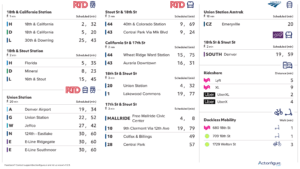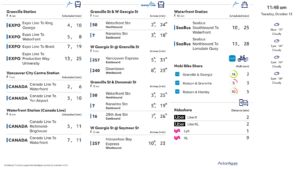At this point you’re used to hearing how millennials are disrupting the traditional workplace. Policies like flexible work hours, remote work, gym memberships, and extended maternity and paternity breaks are becoming industry norms — all changes that have been closely tied to millennial demands who make a majority of the workplace. Why are employers offering more benefits and amenities to their employees than ever before?

Employee burnout isn’t a myth.
On the contrary, employee burnout is actually classified as a sickness by the World Health Organization. What does it entail? Physical and mental exhaustion, distance from your work, general cynicism toward your office, and reduced professional efficacy.

What makes this different from any Monday morning? Employees who are burnt out can’t regain their excitement for the job. Whether it’s working on a project, catching up with coworkers, or a happy hour after hours… it just won’t do it for them.
Not only is motivation lacking, but those facing burnout also come to work less, end up missing important deadlines, and ultimately remove themselves from any social opportunities in the office.
A Gallup report found 23% of full-time US employees studied have experienced burnout in at work often or constantly. Sick leave recently spiked in Germany due to the millions of employees who have been experiencing work-related mental health issues.
These could actually be your top performers.
Studies have found about a fifth of those employees who burn out are even some of your most highly engaged workers. According to the Gallup study mentioned above, the top five reasons for burnout include:
- Unfair treatment at work
- Unmanageable workload
- Unclear role
- Lack of feedback from management
- Unreasonable time pressure
When you think about these causes, the fact that your top performers are so prone to burnout makes sense. The better you are at your job, the more work you tend to be given. With power comes great responsibility!
Moving up the ladder is what most of us strive to do, but the climb can become tricky if the ladder isn’t stable enough. If your employees are getting increased workloads without any support, they’re likely to start feeling burnt out.
Why you should care.
Burnout was originally coined in the 1970s, mostly in reference to those working in the medical field. Now, the term can be applied to anyone, in any job, anywhere. In fact, employee burnout costs employers $125 to $190 billion in healthcare spending each year.

The main reason? Communication. Younger professionals in particular crave feedback from their managers in order to gauge performance and track growth, and they might not be getting it as much as they need.
Having a good relationship with your team is built on the ability to converse about anything — whether it be work-related or personal life matters that can affect your work. This applies even more so to your remote workers, but it doesn’t mean you have to put in any more time than you would for in-office employees.
Feedback not only helps the individual understand themselves, but it also helps managers and leaders understand how to support their staff so employees can continue performing well and not get burnt out. Burnout doesn’t have an impact on just company’s healthcare spending, it also leads to higher employee turnover and more sick days — both of which add financial pressures that cost companies millions every year.
At the end of the day, you want to create a collaborative environment to attract and retain the talent you need to keep your business running. If you focus on spending the time and money to support your employees now, then you’ll end up spending less money down the road on turnover and sick leave.




